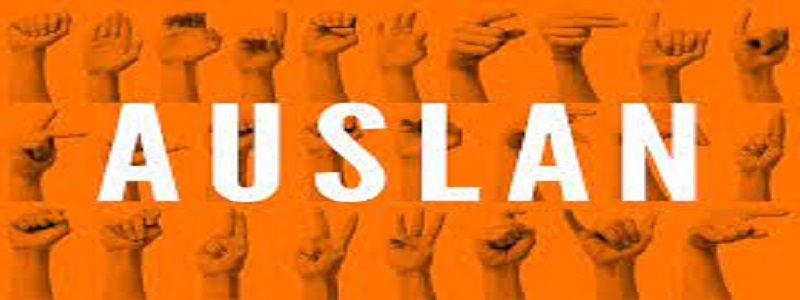Types of Sign Language: A Comprehensive Guide
- Rhythm Languages

- Mar 11, 2023
- 7 min read
Updated: Feb 19, 2024
If you're interested in learning about sign language, you might be surprised to know that there are actually many different types of sign language used all over the world.

In this comprehensive guide, we explore the different types of sign language used around the world. From American Sign Language to British Sign Language, we cover their unique features and characteristics.
Table of Contents:
I. Introduction
Brief explanation of what sign language is and its importance.
II. How many types of sign language are there?
Overview of the different types of sign language used around the world.
Examples of widely used sign languages such as American Sign Language and British Sign Language
Lesser-known sign languages used by smaller communities.
III. Why sign language was created and what was it used for
Origins of sign language and its evolution over time
Early use of sign language by philosophers and in communication between different cultures
Modern use of sign language in education, healthcare, and performing arts
IV. Sign language along trade routes
The use of sign language among traders and merchants throughout history
Examples of trade routes where sign language was used, such as the Silk Road and Trans-Saharan trade route.
Facilitation of cultural exchange and spread of new ideas and technologies.
Importance of sign language as a means of communication for the deaf and hard-of-hearing community
Sign language as a tool for cultural exchange and understanding.
VI. Explanation of the concept of a universal sign language and its importance
The challenges of creating a universal sign language
Discussion of the difficulties in creating a system of signs that is both comprehensive and easy to learn.
Examples of previous attempts to create a universal sign language and their limitations.
VII. The importance of promoting existing sign languages.
Discussion of the unique characteristics and cultural significance of different sign languages
Efforts to improve access to resources for learning and teaching existing sign languages.
Technology and international interpretation services
Use of technology to provide online resources and remote learning opportunities.
Development of international sign language interpretation services to bridge communication gaps
Importance of promoting communication and understanding among all people, regardless of their language or ability
Recognition of the value and diversity of existing sign languages.
Sign language is a visual language that uses hand gestures, facial expressions, and body language to communicate. It is used by deaf and hard-of-hearing individuals as well as people who can hear but prefer to use sign language as their primary form of communication.
Sign language is a fascinating and complex language used by millions of people worldwide. Many people are surprised to learn that there are actually many different types of sign language, each with its own unique characteristics and features.
While there is no definitive answer to how many types of sign language there are, it is estimated that there are over 300 different types of sign language used around the world.
Each type of sign language is specific to a particular geographic region or culture, and many are completely independent of spoken languages.
Some of the most widely used types of sign language include American Sign Language (ASL), British Sign Language (BSL), Australian Sign Language (Auslan), and Chinese Sign Language (CSL). Each of these sign languages is a complete and complex language with its own grammar and syntax.
In addition to these widely used sign languages, there are also many lesser-known sign languages used by smaller communities around the world. For example, Nicaraguan Sign Language was created by deaf children in Nicaragua in the 1970s, and Israeli Sign Language is used by the deaf community in Israel.
Despite the many differences between these different types of sign language, they all share a common goal: to provide a means of communication for the deaf and hard-of-hearing community.
Through the use of hand gestures, facial expressions, and body language, sign language is able to convey the same complexity and nuance as spoken languages.
There are many different types of sign language used around the world, each with their own unique features and characteristics. Some sign languages are based on spoken languages, while others are completely independent. Let's explore some of the most commonly used types of sign language.
American Sign Language (ASL)

American Sign Language (ASL) is the most commonly used sign language in the United States and Canada. It is a complete, natural language with its own grammar and syntax. ASL is based on French Sign Language and has been influenced by many different sign languages around the world.
ASL uses a combination of hand gestures, facial expressions, and body language to convey meaning. It is a visually stunning language that can be learned by anyone interested in communicating with deaf or hard-of-hearing individuals.
British Sign Language (BSL)
British Sign Language (BSL) is the most commonly used sign language in the United Kingdom. It is a complete, natural language that is completely different from English. BSL uses a combination of hand gestures, facial expressions, and body language to convey meaning.

Like ASL, BSL has its own grammar and syntax. It is a visually stunning language that is rich in culture and history. If you're interested in learning BSL, there are many resources available online and in person.
Australian Sign Language (Auslan)

Australian Sign Language (Auslan) is the sign language used in Australia. It is a complete, natural language with its own grammar and syntax. Auslan is based on British Sign Language and has been influenced by many different sign languages around the world.
Like ASL and BSL, Auslan uses a combination of hand gestures, facial expressions, and body language to convey meaning. It is a visually stunning language that is rich in culture and history.
Chinese Sign Language (CSL)
Chinese Sign Language (CSL) is the sign language used in China. It is a complete, natural language with its own grammar and syntax. CSL has been heavily influenced by American Sign Language and Japanese Sign Language.

CSL uses a combination of hand gestures, facial expressions, and body language to convey meaning. It is a visually stunning language that is rich in culture and history.
The History of Sign Language and Why it was Created.
Sign language has been used as a form of communication for centuries, and it is believed to have been created out of necessity by people who were deaf or hard of hearing.
Without the ability to hear spoken language, these individuals developed their own unique ways of communicating through the use of hand gestures, facial expressions, and body language.
One of the earliest recorded instances of sign language being used dates back to ancient Greece, where it was used by philosophers such as Plato and Aristotle to communicate with their deaf students.
In many cultures, sign language was also used as a means of communication between different tribes or groups who spoke different languages.
Over time, sign language evolved into a fully developed language with its own unique grammar and syntax. It was used not only by the deaf and hard-of-hearing community, but also by hearing individuals who needed to communicate with them.
In the modern era, sign language is used in a variety of different contexts. In education, it is used to teach deaf and hard-of-hearing children, while in healthcare it is used to communicate with patients who are unable to speak or hear.
Sign language is also used in the performing arts, including theatre and dance, where it can be used to convey emotion and meaning without the need for spoken language.
Overall, sign language was created out of necessity and a desire for communication. It has since evolved into a complex and fully developed language, and it continues to play an important role in the lives of many people around the world.

The Use of Sign Language for Trade Routes
Sign language was a common form of communication among traders and merchants who traveled along trade routes throughout history. It allowed people who spoke different languages to communicate and conduct business transactions.
The Silk Road which connected Asia and Europe from the 2nd century BCE to the 18th century CE, was one of the most important trade routes in history. Along this route, sign language was used as a means of communication between merchants who spoke different languages.
In addition to the Silk Road, sign language was also used along other trade routes such as the Trans-Saharan trade route in Africa and the Spice Route in Southeast Asia. These routes connected different regions and allowed for the exchange of goods and ideas.
The use of sign language along trade routes helped to facilitate cultural exchange and the spread of new ideas and technologies. It allowed people from different regions to share their knowledge and expertise, which helped to spur innovation and development.
Some sign languages developed along specific trade routes. For example, Homa sign language, which is used in rural communities in Ghana, developed along a trade route between the towns of Homa and Broughton in the 19th century. This sign language is still used today and is an important part of the local culture.
Is There a Universal Sign Language
Despite the existence of numerous sign languages used around the world, there is no universal sign language that is understood by everyone.
Each sign language is unique and has developed within a specific community, and although some signs may be similar across different languages, there is no universal sign language that is universally understood.
The need for a universal sign language has been discussed for many years, especially as more people with hearing disabilities have sought to communicate with others around the world.
However, attempts to create a universal sign language have been met with limited success, as it is difficult to create a system of signs that is both comprehensive and easy to learn.
Instead, efforts have focused on promoting the use of existing sign languages and improving access to resources for learning and teaching them.
This includes the use of technology to provide online resources and remote learning opportunities, as well as the development of international sign language interpretation services to help bridge communication gaps between people who use different sign languages.
While there is no universal sign language, efforts to improve access and understanding of existing sign languages can help to promote communication and understanding among all people, regardless of their language or ability.

Conclusion Sign language is a fascinating and beautiful way to communicate. There are many different types of sign language used around the world, each with their own unique features and characteristics.
From American Sign Language to British Sign Language, Australian Sign Language to Chinese Sign Language, each sign language offers a rich cultural and linguistic experience.
Learning sign language can open up new avenues of communication and understanding. It allows individuals to connect with deaf and hard-of-hearing individuals in a meaningful way and can be a valuable asset in many different fields, including education, healthcare, and social services.
Whether you're interested in learning sign language for personal or professional reasons, there are many resources available to help you get started. From online courses to in-person classes, there are many ways to immerse yourself in the language and start communicating with the deaf and hard-of-hearing community.
To sum it all up, the world of sign language is vast and diverse, with many different types of sign language used around the world. Learning sign language can be a valuable and rewarding experience, allowing individuals to connect with the deaf and hard-of-hearing community in a meaningful way.
010101.jpg)







Comments